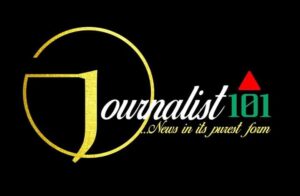•As Monetary Policy Committee meets
•Economists chart path to tackling the recession
•Too early to predict the shape of recovery, says Adenikinju
•Recovery depends on the global response to the second wave of COVID-19
The Monetary Policy Committee (MPC) members will be in a dilemma today as they begin a marathon session, two days after a recession was officially declared.
They are meeting today and tomorrow to take key monetary decisions that would affect the money supply.
The friable economy had retreated in the second quarter (Q2) of the year and relapsed into what appears a complicated recession on Saturday when the National Bureau of Statistics (NBS) released the figures of the third quarter (Q3) gross domestic product (GDP).
The growth rate was negative for the second consecutive quarter, satisfying the technical condition for a recession.
The GDP slipped by 3.61 per cent (short of expectations and postulations of many economists) compared to the -6.1 percent growth rate recorded in Q2. The fall was steeper than the figures that plunged the country into recession four years ago. In Q2 2016 when the country previously went into recession, the GDP had shrunk by 2.1 per cent, following the -0.4 per cent recorded the previous quarter on account of a crash in the international crude market.
The fall this time is steeper, compelling economists to declare it as a “severe recession”. This may have compounded the choice before MPC as they hold the last session of the year.
The monetary policy rate (MPR), the benchmark for determining the lending rate, and partly (in extension) the quantity of money supplied to the economy, resumed the year at 13.50 per cent. It has subsequently been reduced to force down the cost of funds and boost investment. As the economy continued to totter, the Committee further reviewed it down during the September meeting.
Members of the MPC confessed in the deliberation statement released by the Central Bank of Nigeria (CBN) recently that the sluggish economy, declining purchasing power, rising unemployment, unbearable cost of the fund as well as escalating inflation rate did put them in “a dilemma” in deciding the policy direction. The challenges are still sore wounds, even as pressure mounts on both monetary and fiscal authorities to act fast to save the ailing economy.
But theirs may be reduced to a Hobson’s choice, as economists say there are not many options before the monetary authority in the face of a full-blown recession.
MPC might have fallen short of the radical approach used by Nigeria’s peers that faced the same urgent need to stimulate growth.
For instance, South Africa’s policy rate was 6.25 per cent shortly before COVID-19; the South African Reserve Bank (SARB) has brought it down to as low as 3.25 per cent. In one swoop, Egypt crashed its rate 300 basis points, from 13.25 per cent to 10.25 per cent, at an unscheduled meeting in March to address the teething issues caused by COVID-19. It dropped subsequently. But Nigeria’s MPC seems to have lost that speed, which economists say, is now too late.
Founder, Foundation for Economic Research and Training, and a professor of economics, Prof. Akpan Ekpo, said a tweak in the monetary instruments would have been efficient a few months ago, but not anymore.
“Monetary tools are not efficient when an economy is already deep in recession. Monetary policy works when you are about to enter a recession but not when you are in it. So, there is really not much the MPC can do. Whether you want to adopt quantities easing or apply orthodox principles, they will not work. Even if they bring the interest rate to zero, many people will still not want to invest,” he said.
The professor said the Central Bank is left with the option of leveraging its “developmental function” to stimulate the economy through intervention in critical sectors. He said the strategic intervention could make a difference in how fast the country could come out of the recession.
Akpan, who described the current economic challenge as a “serious dilemma,” said the crash of oil prices, demand shock, and the recent hike in electricity and petroleum motor spirit (PMS) tariffs, as well as high inflation rate, made the situation more precarious.
Akpan said that government has a rare opportunity in stimulating investment and boosting household spending. He, however, said it might not be able to do more because of the shortfall in revenue and the drying-up debt market.
Managing Director of Cowry Asset Management, Johnson Chukwu, said the MPC would not take measures that would further worsen the situation and increase downward contraction, just as they would be concerned about how to stabilise inflation.
The two variables – downward growth and accelerating inflation – he said would certainly make today’s session an extra-ordinary one. He noted that the economy needs liquidity as much as inflation needs to be checked, which makes the choice before the MPC a hard one.
Another economist, Prof. Ken Ife, said the “monetary tools available for the MPC are limited”. He said a reduction in the MPR would not make any difference because investors are wary of expansion as purchasing power continues to decline.
“You need to be sure of which production because of the high unemployment and rising inventories. If you increase production, who will buy?” he asked.
Ife warned against the liquidity trap, saying the bond yields are already too low.
According to him, the government may have to consider borrowing on its assets (privatisation) as cash flow continues to shrink as a result of falling oil prices and contracting tax revenues.
Director, Centre for Petroleum, Energy Economics and Law, the University of Ibadan, Prof. Adeola Adenikinju, said the road to recovery was bumpy and unpredictable. He said the economy would depend on the response to COVID-19 vaccination and the attitude of the international oil market to recovery to drag it out of recession.
Adenikinju, who is also a member of the MPC, said it was too early to determine whether the recovery would be V-shape (sharp) and U-shape (sluggish), as there were several complicated extraneous factors that could stimulate or keep it down.
He said: “There are a lot of intermediating factors that could bring uncertainty. What is going to be the nature of the second wave of COVID-19? We are yet to know. How would countries respond to it? Would there be another global lockdown?
“The vaccines are almost ready but we are yet to know much about the distribution. One may say we will get out of the recession next year but nobody can predict how strong the growth will be because of the high level of uncertainty.”





